Whatare Flat Feet?
Flat feet occur when the arches are falling and the heel and ankles turn in. This process is called pronation. Each person will have a varying degree of how much their foot will pronate depending upon the amount of flexibility

What are flat feet?
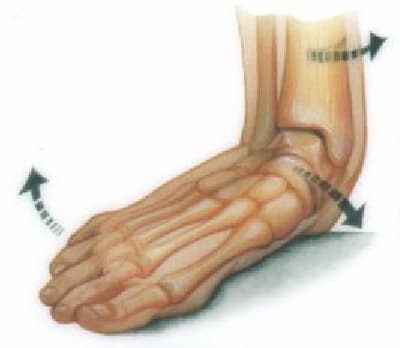 Flat feet occur when the arches are falling and the heel and ankles turn in. This process is called pronation. Each person will have a varying degree of how much their foot will pronate depending upon the amount of flexibility in the 3 areas of the foot- the subtalar joint, midfoot and forefoot.
Flat feet occur when the arches are falling and the heel and ankles turn in. This process is called pronation. Each person will have a varying degree of how much their foot will pronate depending upon the amount of flexibility in the 3 areas of the foot- the subtalar joint, midfoot and forefoot.
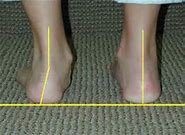 The subtalar joint is the joint of the heel bone (calcaneus) and talus (which some people call the ankle bone) and you can exam how much this joint is pronating by looking at the back of the foot when standing and how much of a bow is in the achilles tendon.
The subtalar joint is the joint of the heel bone (calcaneus) and talus (which some people call the ankle bone) and you can exam how much this joint is pronating by looking at the back of the foot when standing and how much of a bow is in the achilles tendon.
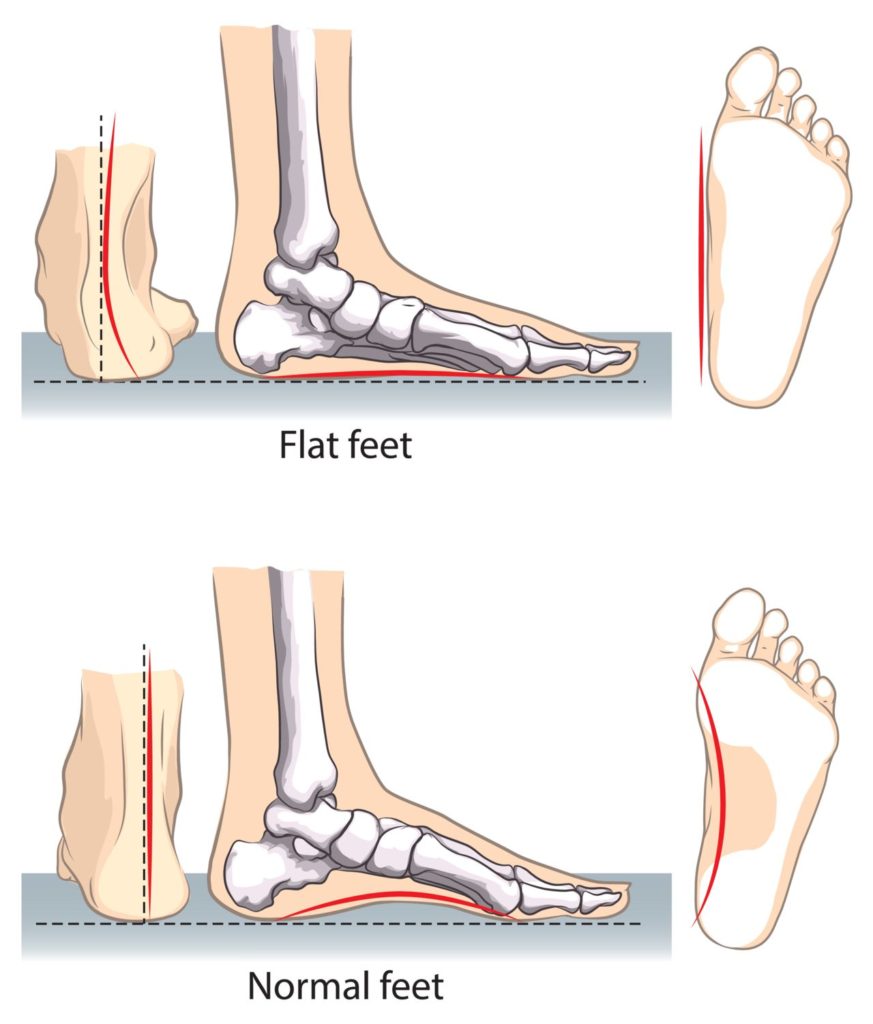 The midfoot makes up the arch of the foot and as these joints are collapsing, the arch is falling closer to the ground.
The midfoot makes up the arch of the foot and as these joints are collapsing, the arch is falling closer to the ground.
The forefoot also rotates inward primarily due to flexibility at the 1st metatarsal- cuneiform joint causing a forefoot varus. This is also called a hypermobile 1st ray.
What causes flat feet?
When born, flat feet are not as common as average arches with only 25% of the population born with flat feet. As the arch st
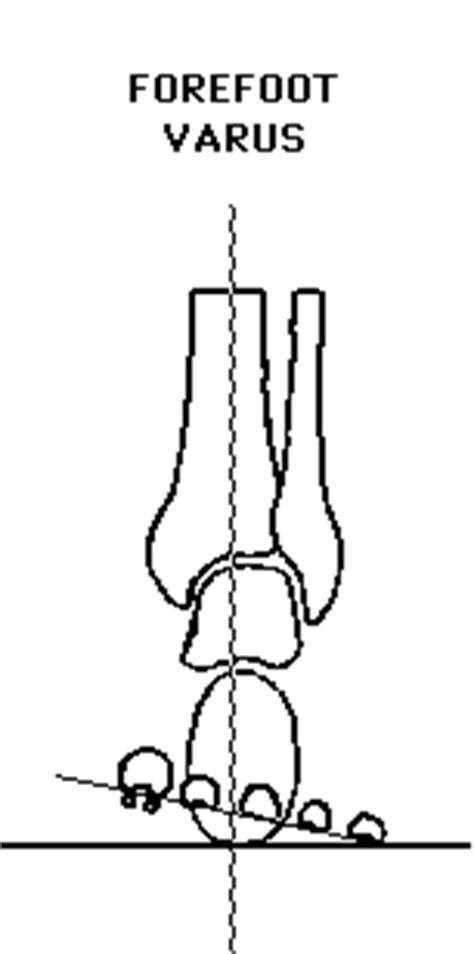
arts to weaken, another 10-15% of the 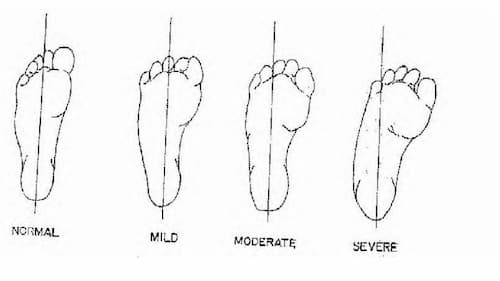 population will develop flat feet. This means that about 35-40% of the adult population have flat feet. For this 25% of children, many doctors dismiss this as something they will grow out of, which leads to further problems. Many kids will not necessarily complain about their feet hurting. They sometimes feel that this is how everyone feels and learn to compensate by not being as active, toe walking or turning their feet in and becoming in-toed (metatarsus adductus). Many kids will complain about their legs aching and wanting them rubbed at night since they are hurting.
population will develop flat feet. This means that about 35-40% of the adult population have flat feet. For this 25% of children, many doctors dismiss this as something they will grow out of, which leads to further problems. Many kids will not necessarily complain about their feet hurting. They sometimes feel that this is how everyone feels and learn to compensate by not being as active, toe walking or turning their feet in and becoming in-toed (metatarsus adductus). Many kids will complain about their legs aching and wanting them rubbed at night since they are hurting.
Do flat feet cause problems?
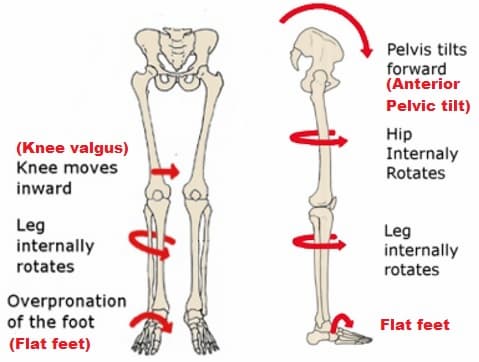 Yes, it usually does. Fallen arches prevent your feet from properly absorbing the shock of walking. As the foot pronates, the 3 areas of the foot collapse to varying degrees. This causes pain in one or more areas of the foot including plantar fasciitis, heel pain, bunions, hammertoes and neuromas. Also, leg aches called shin splints, knee issues such as arthritis and Osgood Schlatters Disease, hip, back and neck problems.
Yes, it usually does. Fallen arches prevent your feet from properly absorbing the shock of walking. As the foot pronates, the 3 areas of the foot collapse to varying degrees. This causes pain in one or more areas of the foot including plantar fasciitis, heel pain, bunions, hammertoes and neuromas. Also, leg aches called shin splints, knee issues such as arthritis and Osgood Schlatters Disease, hip, back and neck problems.
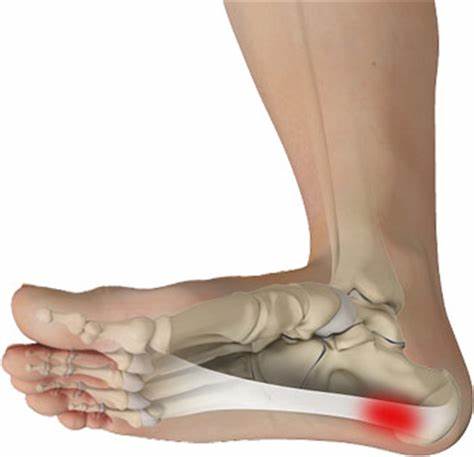 Heel pain is the most common foot problem. As the foot pronates, the plantar fascia tendon on the bottom of the foot needs to stretch with each step. If there is too much pronation from any of the 3 areas, heel, arch or forefoot, the plantar fascia tendon is stretched too far and pain will develop either in the forefoot, arch and most commonly where it attaches into the heel bone causing plantar fasciitis.
Heel pain is the most common foot problem. As the foot pronates, the plantar fascia tendon on the bottom of the foot needs to stretch with each step. If there is too much pronation from any of the 3 areas, heel, arch or forefoot, the plantar fascia tendon is stretched too far and pain will develop either in the forefoot, arch and most commonly where it attaches into the heel bone causing plantar fasciitis.
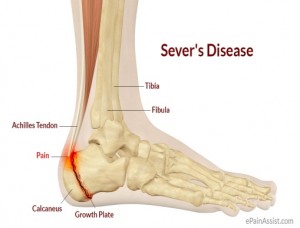 In kids between 8-14, one of the more common problems with the foot is heel pain due to Sever’s Disease. The growth plate of the heel is trying to attach to the heel and any tightness from the achilles tendon in the back of the heel or pulling from the plantar fascia tendon from the arches falling and flat feet will cause this tenderness in the heels.
In kids between 8-14, one of the more common problems with the foot is heel pain due to Sever’s Disease. The growth plate of the heel is trying to attach to the heel and any tightness from the achilles tendon in the back of the heel or pulling from the plantar fascia tendon from the arches falling and flat feet will cause this tenderness in the heels.
 Another common problem with flat feet are bunions. Bunions are located at the base of the big toe and are an inflammation of the area due to the bone and/or capsule being enlarged. As the foot pronates and the 1st metatarsal rotates in, ground pressure pushes the big toe towards the other toes causing the 1st metatarsal head to protrude more. The 1st metatarsal being hypermobile causing the forefoot varus makes the bunion even worse.
Another common problem with flat feet are bunions. Bunions are located at the base of the big toe and are an inflammation of the area due to the bone and/or capsule being enlarged. As the foot pronates and the 1st metatarsal rotates in, ground pressure pushes the big toe towards the other toes causing the 1st metatarsal head to protrude more. The 1st metatarsal being hypermobile causing the forefoot varus makes the bunion even worse.
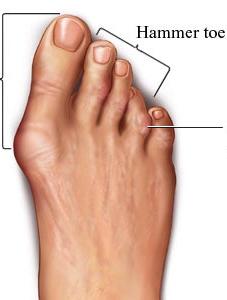 Hammertoes are the contracture of the toes at one or both of the joints of the toes. Flat feet can cause hammertoes mainly due to compensation. When the arch or heel is hurting, a person will often compensate and turn their foot out. The toes will then start grasping in order to keep the balance.
Hammertoes are the contracture of the toes at one or both of the joints of the toes. Flat feet can cause hammertoes mainly due to compensation. When the arch or heel is hurting, a person will often compensate and turn their foot out. The toes will then start grasping in order to keep the balance.
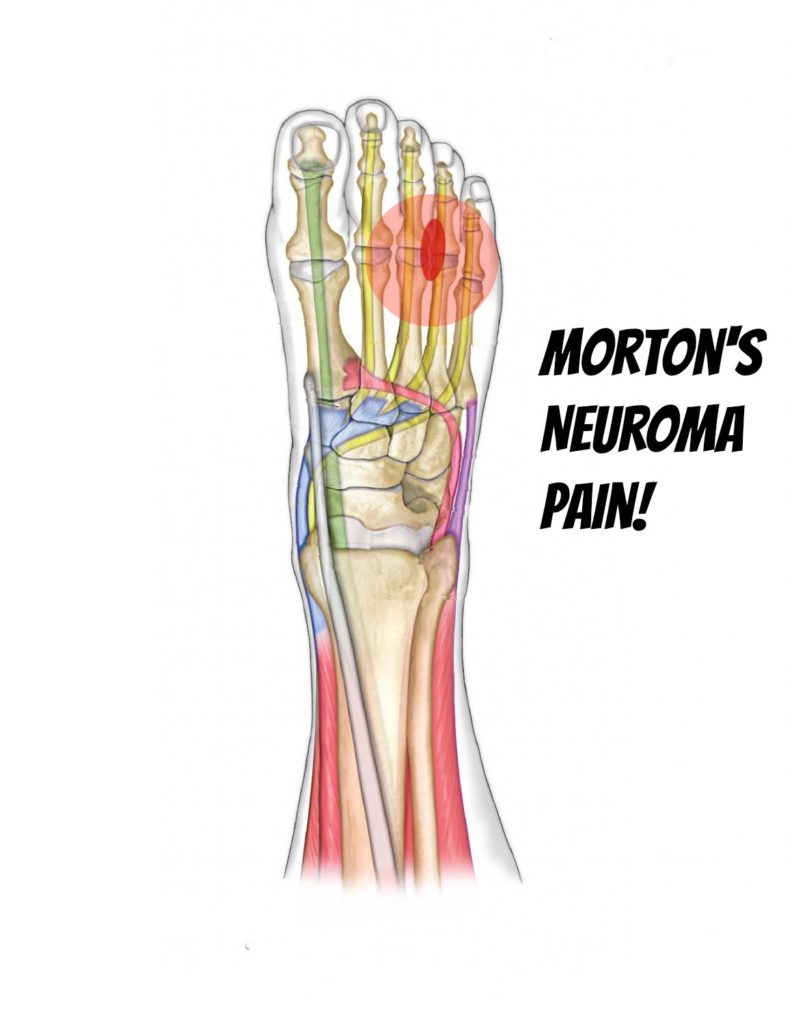 A burning or shooting pain in the ball of the foot that sometimes radiates into the toes is called a neuroma. A neuroma is an inflammation of the nerve due to the metatarsals pinching the nerve. This is usually due to the foot compensating from the arch and/or heel pain and turning the foot outwards. The metatarsals are then pushing against each other causing the neuroma.
A burning or shooting pain in the ball of the foot that sometimes radiates into the toes is called a neuroma. A neuroma is an inflammation of the nerve due to the metatarsals pinching the nerve. This is usually due to the foot compensating from the arch and/or heel pain and turning the foot outwards. The metatarsals are then pushing against each other causing the neuroma.
This pronation of the foot causes the internal rotation of the leg causing shin splints. Many people treat shin splints with rubbing the legs or taping the legs. However, the real reason people get shin splints is due to the foot pronating causing the main supporter of the arch – the posterior tibial tendon to  be stretched too far and thus pulls away from its attachment into the tibia. As someone compensates for the foot pronation, they turn their foot out which then causes the muscles in the front of the leg – tibialis anterior and extensor digitorum longus, lateral aspect due to the peroneus brevis and/or longus or posterior aspect due to the achilles tendon to be pulled too much causing the shin splints in these areas of the leg.
be stretched too far and thus pulls away from its attachment into the tibia. As someone compensates for the foot pronation, they turn their foot out which then causes the muscles in the front of the leg – tibialis anterior and extensor digitorum longus, lateral aspect due to the peroneus brevis and/or longus or posterior aspect due to the achilles tendon to be pulled too much causing the shin splints in these areas of the leg.
 Unless there was an actual injury or autoimmune disease, most knee pain can be due to flat feet. As the foot flattens, the leg rotates thus causing the knee to rotate inward. The knee is intended to be a hinge joint moving back and forth not twist. This twisting causes a strain on the ligaments of the knee causing the knee pain. It also causes the Osgood-Schlatter Disease in the front of the knee in kids.
Unless there was an actual injury or autoimmune disease, most knee pain can be due to flat feet. As the foot flattens, the leg rotates thus causing the knee to rotate inward. The knee is intended to be a hinge joint moving back and forth not twist. This twisting causes a strain on the ligaments of the knee causing the knee pain. It also causes the Osgood-Schlatter Disease in the front of the knee in kids.
As the foot pronates, the leg rotates and the knee twists causing torsion at the lower back and hips and causing the back pain.
Down syndrome and Flat Feet
Typically, a person will carry 23 pairs of chromosomes in their genetic makeup. People with down syndrome carry an extra copy of chromosome 21 in their DNA.
Chromosome 21 is also where the collagen production is done. Low or abnormal collagen production causes your ligaments and tendons to be very loose and flexible. Weaker tendons can lead to overpronation which in turn results in fallen arches or flat feet.
According to Dr. Lorri Riley, “about 95% of people with down syndrome have flat feet.” Micah, Dr. Lorri Riley’s nephew, has down syndrome and does, in fact, have fallen arches. His situation inspired her to develop an effective solution for individuals with Down syndrome.
View a short interview with Dr. Riley and Micah about down syndrome and flat feet here.
How do you treat flat feet without medication or surgery?
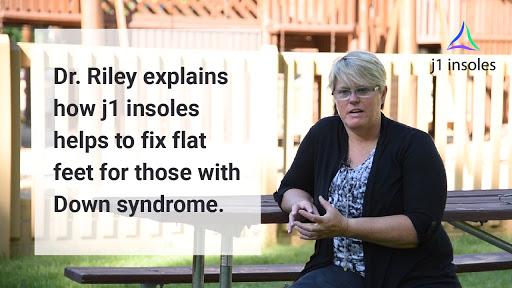 It’s possible to improve the strength of your arch over time with various foot exercises. Implementing stretches that target the various tendons in your feet and ankles can also loosen tightness that leads to improper pronation. When someone has too much pronation and have flat feet, it is best to combine the stretching and strengthening exercises with j1 insoles. J1 insoles are the only patented over the counter arch support on the market for flat feet. J1 insoles patented 3 point design corrects the flat foot in all 3 areas – heel, arch and forefoot.
It’s possible to improve the strength of your arch over time with various foot exercises. Implementing stretches that target the various tendons in your feet and ankles can also loosen tightness that leads to improper pronation. When someone has too much pronation and have flat feet, it is best to combine the stretching and strengthening exercises with j1 insoles. J1 insoles are the only patented over the counter arch support on the market for flat feet. J1 insoles patented 3 point design corrects the flat foot in all 3 areas – heel, arch and forefoot.
Strengthening exercises for flat feet
Targeting your leg muscles with strength building exercises can increase the support your feet and legs provide the rest of your body. This translates to less overpronation over time.
Exercises for flat feet to provide more structural support can include:
- calf raises
- squats
- lunges
All three target the large muscle groups located in your legs with the goal of providing more structural support. The sock gathering exercise where the toes curl a sock up that is laid on the floor can also help strengthen the arch.
Stretches for flat feet that reduces overpronation – If you’re experiencing discomfort or pain as a result of flat feet, you can reduce your tendency to overpronate with various stretches.
- Calf stretch
- To relieve tight calves and tendons, place your hands on a wall. Place one foot behind the other and bend your knees toward the wall until you feel the back of your heel stretching. Hold the stretch for 15 seconds. Switch your feet and repeat until the tightness in your heel/calf is relieved.
- Golf ball/tennis ball roll
- Place a ball on the ground and position the arch of your foot over the ball. Roll your foot in a rotating or forward motion to loosen the fascia located on the bottom of your feet. For a firmer touch, use the golf ball.
Insoles for flat feet
Over time, flat feet can cause heel pain, bunions, hammertoes, plantar fasciitis and a number of other painful foot, leg or back issues. To avoid the likelihood of experiencing these symptoms, it’s best to consider orthotic care for flat feet that provides you support throughout the day.
j1 insoles has created an insole that corrects overpronation, providing your foot with the corrective support it needs in all 3 areas. Insoles for flat feet seek to correct overpronation by placing the heel in neutral position, providing true support for the fallen arch and correction for the forefoot varus. No other over the counter arch support corrects in all 3 areas of the foot like the patented design of j1 insoles for flat feet.





